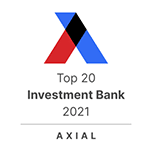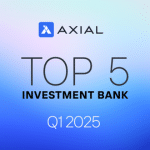
As compared with the public markets, the private capital markets are like the wild west. I liken it to a frontier town where there’s no sheriff, plenty of gunslingers and news travels slowly by stagecoach.
But out of all the things that define private capital markets — murky financials, concentrated ownership, succession risk and scarcity of capital — it’s the lack of liquidity or the inability to sell when you want to that truly differentiates them from public markets.
Unlike Monro Inc.’s stock, there’s no instantaneous market for shares in Lou’s Tire World. It not only takes longer to sell or “transfer” ownership of Lou’s Tire, but also what the dealership sells for depends on what you’re trying to accomplish and with whom you’re trying to accomplish it.
Ultimately, there is no one single value for any private business and there are multiple values for every private business. Let me explain.
Let’s say that you decide that you want to create an ESOP so you can exit now and transfer ownership of your business to your loyal employees. Well, ESOPs are highly regulated entities and the value that you receive is “fair market value,” as determined by a certified appraisal defined in IRS code 4.72.4.3.12.
The pay-out you get as a selling shareholder is determined by that appraisal, the company’s cash balance, how much a bank wants to fund a long-term loan and how much “paper” you’re willing to carry. That’s the way it was for my firm when we became an ESOP. We could have gotten higher value elsewhere, but we chose this option to keep our lives unchanged and so we chose “fair market value.”
Now, what if you wanted to sell to your top managers in a management buy-out? Well, how much money have they saved up, how much can they borrow from a bank and how much paper are you willing to hold? That determines the value.
Keep in mind, you’re only dealing with one buyer here. There are many good reasons to choose this route, but it’s a negotiated transaction somewhere between “manager value” — which is what they can swing — and “owner value,” which is what’s in your head.
Much like that ESOP, you are purposely choosing the method and in doing so, you are also choosing the value.
When you open up the business to a broader pool of buyers, you venture into the realm of “market value.” With market value, you are dealing with financial buyers, like private equity groups, and strategic buyers, like Mavis Tire Express, Monro, Southern Tire Mart LLC and others.
Financial buyers could be your high bidder, but they could also be your low bidder. Much depends on whether they have an existing investment or “platform” in your business. If not, they’ll likely discount your profitability by adding in a new CEO if you are retiring, a new chief financial officer, information systems investments and other valid expenses they need to support the larger business they intend to build.
While you think you have $3 million in annual profitability, they may see $2.2 million and base their valuation on that. That’s “financial buyer market value.”
Once financial buyers have a platform, they soon become strategic buyers, who view your business differently than pure financial buyers. They are more likely to give credit for the “kitchen sink” of add-backs that you try to throw in there. My approach with strategic buyers is to find store-level EBITDA, before corporate administrative expenses, and adjust it from there.
I once ran 18 tire stores as a district manager with only two other associates — an assistant district manager and my admin/HR person. My office was in the back of a store. So, in that case, I would add the expense of two or three bodies to the store-level EBITDA, make sure there is a cheap office to house them and that’s the EBITDA I would present to strategic buyers. Then we would argue back and forth about it — ultimately arriving at “strategic buyer market value.”
Market value from financial or strategic buyers can usually garner the highest price, if that’s what matters to you.
Getting multiple potential buyers involved or at minimum, giving the impression that a competitive process is in place, always helps.
But if there is only one buyer for your business and they know it, then they set the price. Your only leverage is to accept it or to pass.
Private businesses can be risky and the private markets are messy. It’s not an efficient market. You’ll see highly overvalued and over-leveraged deals and scratch your head. And you’ll find great undervalued and misunderstood businesses that no one’s interested in.
Value is definitely in the eye of the beholder.
For a more thorough understanding of business valuation, read “Private Capital Markets” by Robert T. Slee. It provides a framework for understanding how private businesses are valued, transferred and capitalized. I highly recommend it.












